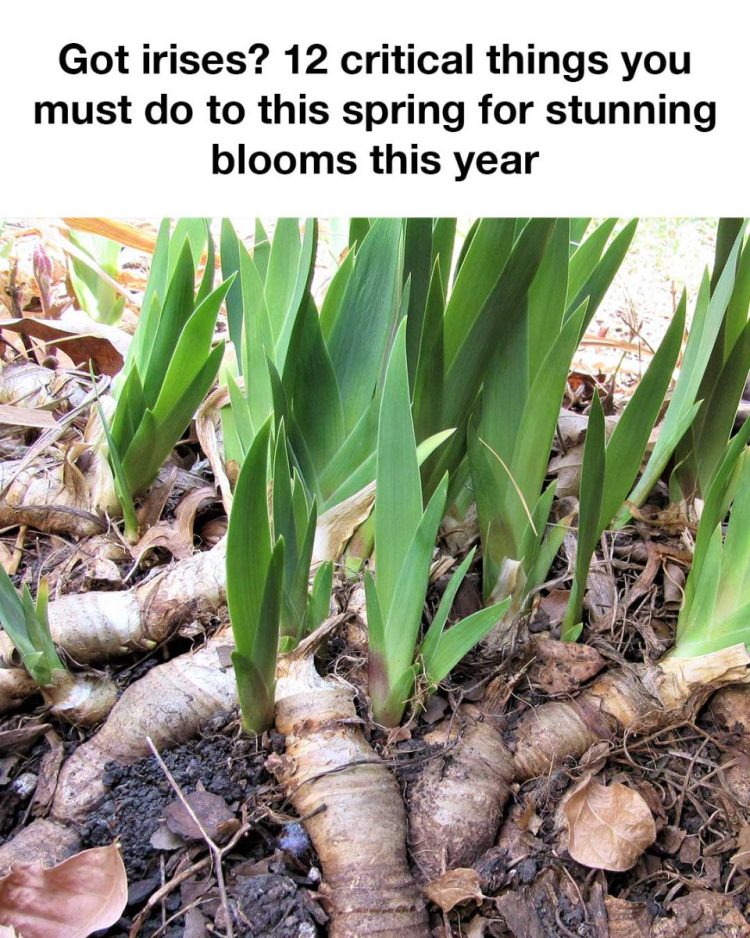Irises benefit from a balanced fertilizer applied in early spring. Choose a fertilizer with a ratio of 10-10-10 or 5-10-10, which provides essential nutrients without excessive nitrogen that can lead to lush foliage at the expense of blooms. Apply the fertilizer around the base of the plants, avoiding direct contact with the rhizomes, and water it in well.
6. Watering Techniques: How Much and How Often
While irises are drought-tolerant, they still require regular watering during their active growth period. Water deeply once a week, ensuring the soil is moist but not waterlogged. Adjust your watering schedule based on rainfall and temperature, as overwatering can lead to root rot. Consistent moisture is key to supporting healthy growth and flowering.
7. Mulching: Benefits and Best Practices
Mulching around irises helps retain soil moisture, suppress weeds, and regulate soil temperature. Use a light layer of organic mulch, such as shredded bark or straw, being careful not to cover the rhizomes, as this can lead to rot. Mulching also adds organic matter to the soil as it breaks down, improving soil health over time.
8. Pest and Disease Control: Prevention and Treatment
Common pests that affect irises include iris borers and aphids. Regularly inspect your plants for signs of infestation and treat them promptly with insecticidal soap or neem oil. To prevent diseases such as leaf spot and rust, ensure good air circulation around your plants and avoid overhead watering. Remove any infected foliage immediately to prevent the spread of disease.
9. Supporting Iris Stalks: Methods to Prevent Toppling
Tall iris varieties may require staking to prevent their flower stalks from toppling over in strong winds or heavy rain. Use bamboo stakes or metal supports, and gently tie the stalks with soft twine or plant ties. This support helps keep the blooms upright and prevents damage to the plant.
10. Monitoring Sunlight Exposure for Optimal Growth
Irises require full sun to bloom their best, ideally receiving at least six hours of direct sunlight per day. Monitor your garden’s sunlight exposure and consider relocating irises that are in too much shade. Adequate sunlight is essential for photosynthesis and the production of vibrant flowers.
11. Companion Planting: Enhancing Iris Beauty and Health
Companion planting can enhance the beauty and health of your irises. Consider planting them alongside other perennials such as daylilies, peonies, or lavender, which can complement their colors and provide additional interest in the garden. Companion plants can also help deter pests and improve soil health.
12. Avoiding Common Mistakes in Iris Care
Common mistakes in iris care include overwatering, planting too deeply, and neglecting to divide overcrowded clumps. Avoid these pitfalls by following best practices for watering, planting, and maintenance. Educate yourself about the specific needs of your iris varieties to provide them with the best care possible.Conclusion: Achieving Stunning Iris Blooms Through Proper Spring Care
By following these 12 critical steps, you can ensure your irises receive the care they need to produce stunning blooms. Spring is the perfect time to focus on their maintenance, setting the stage for a beautiful display in your garden. With proper attention to soil, water, sunlight, and pest control, your irises will reward you with vibrant, healthy flowers that enhance the beauty of your outdoor space.

I didn’t know about this
ADVERTISEMENT
For Complete Cooking STEPS Please Head On Over To Next Page Or Open button (>) and don’t forget to SHARE with your Facebook friends
ADVERTISEMENT